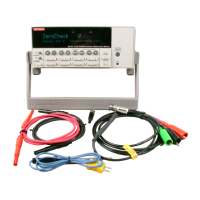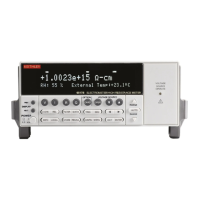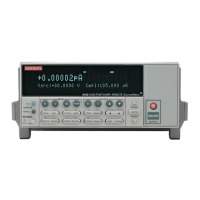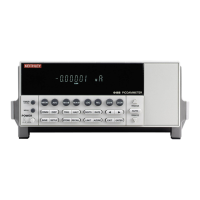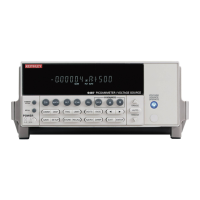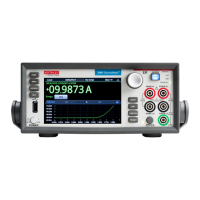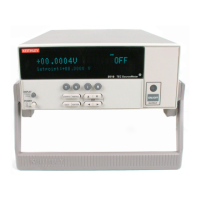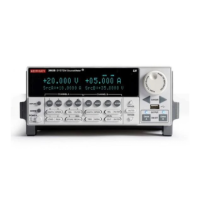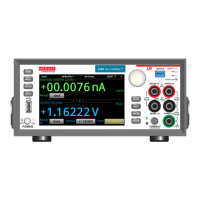Amps Measurements 4-9
NOTES The format that the reading string is returned in is set by commands in the FORMat
Subsystem (see Section 16).
If there is no reading available when :DATA? is sent, an error (-230) will occur.
The READ? command can be used to return “fresh” readings. This command triggers
and returns the readings. See Section 15 for details.
Programming example
The following command sequence will perform one zero corrected amps measurement:
*RST ‘ Return 6514 to RST defaults.
SYST:ZCH ON ‘ Enable zero check.
FUNC ‘CURR’ ‘ Select the Amps function.
CURR:RANG 20e-12 ‘ Select the 20pA range.
SYST:ZCOR ON ‘ Perform zero correction.
CURR:RANG:AUTO ON ‘ Enable auto range.
SYST:ZCH OFF ‘ Disable zero check.
READ? ‘ Trigger and return one reading.
Amps measurement considerations
Some considerations for making accurate amps measurements are summarized as follows.
Additional measurement considerations are covered in Appendix C. For comprehensive infor-
mation on precision measurements, refer to the Low Level Measurements handbook, which is
available from Keithley Instruments.
Input bias current
An ideal ammeter would read 0A with an open input. In practice, however, ammeters do have
some current that flows when the input is open. This current is known as the input bias (offset)
current and may be large enough to corrupt low current measurements.
The input bias current for Model 6514 is listed in the specifications. Input bias current may
be reduced by performing the current offset correction procedure explained in Section 19.
Voltage burden
The input resistance of the ammeter causes a small voltage drop across the input terminals.
This voltage is known as the voltage burden. If the voltage burden is large in relation to the volt-
age of the measured circuit, then significant measurement errors will occur.
Refer to Figure 4-4 to see how voltage burden affects current measurements. Assume V
S
is
5mV and R
S
is 5kΩ to configure a 1uA current source (5mV/5kΩ = 1µA). An ideal ammeter
with zero voltage burden would measure the current source as follows:
I
M
E
S
R
S
------
5mV
5kΩ
------------ 1µA== =
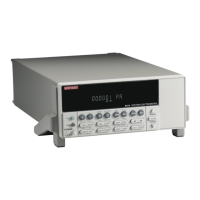
